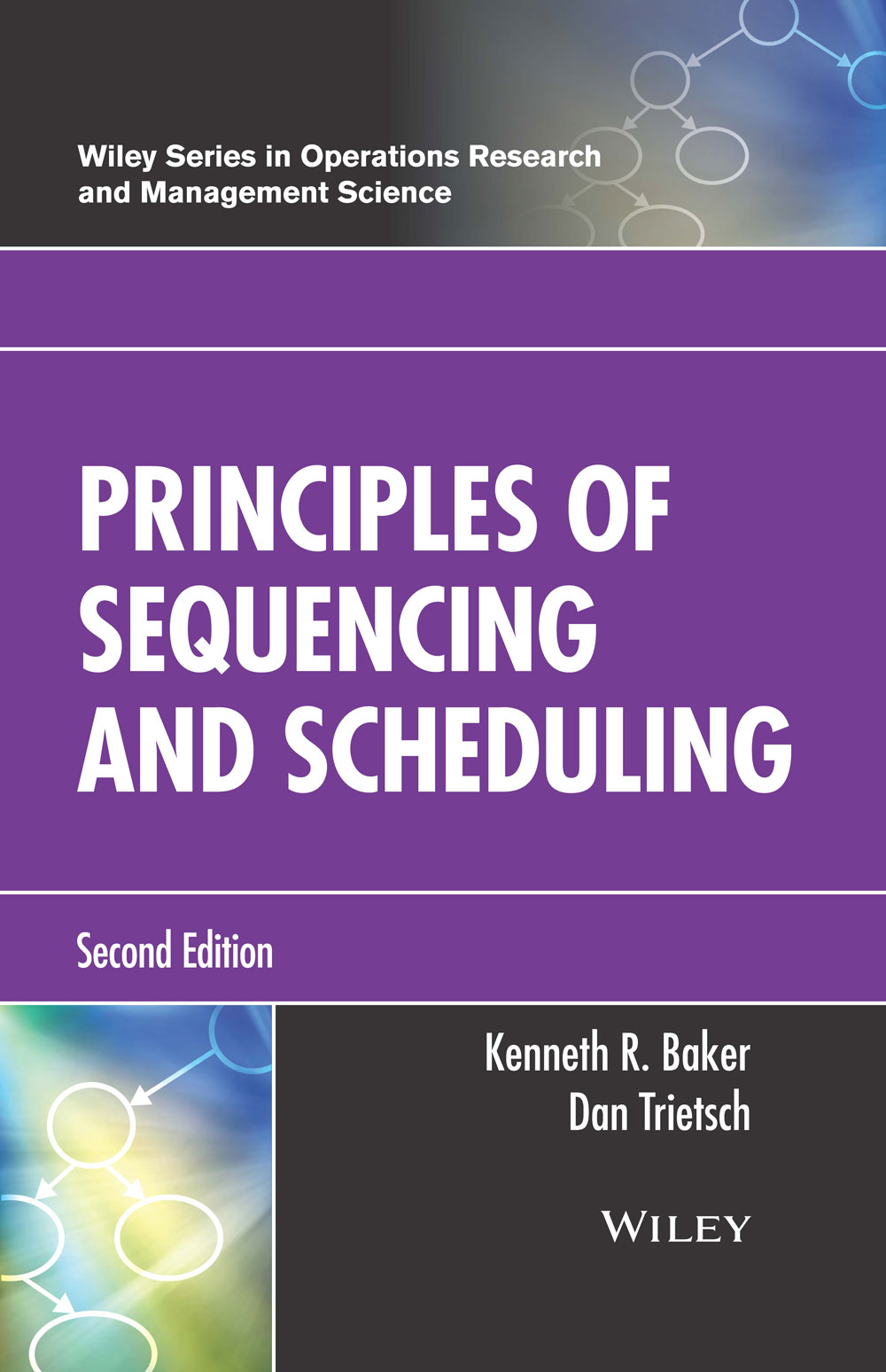About the Book
FROM THE PREFACE
 This textbook provides an introduction to the concepts, methods, and results of scheduling theory. It is written for graduate students and advanced undergraduates who are studying scheduling, as well as for practitioners who are interested in the knowledge base on which modern scheduling applications have been built.
This textbook provides an introduction to the concepts, methods, and results of scheduling theory. It is written for graduate students and advanced undergraduates who are studying scheduling, as well as for practitioners who are interested in the knowledge base on which modern scheduling applications have been built.
New in the Second Edition
The second edition adds coverage of two major advances in stochastic scheduling and also addresses a few other new topics. One major development involves the application of branch and bound techniques and mathematical programming models to some safe scheduling problems. That new work, incorporated into several chapters, shows that the toolkit developed for deterministic scheduling can apply to safe scheduling as well. The second major development builds on the validation of lognormal distributions for various empirical datasets. That new work allows us to implement the full spectrum of analytics and modeling to scheduling problems, most importantly in project scheduling. Accordingly, the book contains a new chapter devoted to project analytics and an expanded chapter dealing with hierarchical safe scheduling for projects.
HISTORICAL BACKGROUND
This book is an updated version of Ken Baker’s text, Introduction to Sequencing and Scheduling (ISS). ISS was published by John Wiley & Sons in 1973 and became the dominant textbook in scheduling theory. A generation of instructors and graduate students relied on that book as the key source of information for advanced work in sequencing and scheduling. Later books stayed abreast of developments in the field, but as citation records indicate, those books were seldom treated as fundamental to the study of scheduling.
Sales of ISS slowed by 1980, and Wiley eventually gave up the copyright. Although they found a publishing house interested in buying the title, Baker took back the copyright. For several years, he provided generous photocopying privileges to instructors who were still interested in using the material, even though some of it had become outdated. Finally, in the early 1990s, he revised the book. The sequel was Elements of Sequencing and Scheduling (ESS), self-published in 1992 and expanded in 1995. Less encyclopedic than its predecessor, ESS was rewritten to be readable and accessible to the student while still providing an intellectual springboard to the field of scheduling theory. Without advertising or sales reps, and without a publishing house, ESS sold several hundred copies in paperback through 2007. Another generation of advanced undergraduate and graduate students used the book in courses, while other graduate students were simply assigned the book as required reading for independent studies or qualifying exams. Current research articles in scheduling continue to cite ISS and/or ESS as the source of basic knowledge on which today’s research is being built.
Perhaps the most important topic missing from ESS was stochastic scheduling. With the exception of the chapter on job shop simulation, almost all the coverage dealt with deterministic models. In the last 15 years, research has focused as much on stochastic models as on deterministic models, and stochastic scheduling has become a significant part of the field. But traditional approaches to stochastic scheduling have their limitations, and new approaches are currently being developed. This book updates the coverage of ESS, integrating the basics of safe scheduling as well as traditional stochastic scheduling. Its title reinforces the experiences of two generations of students and scholars, providing a thread that establishes this volume as the latest update of a classic text.
TABLE OF CONTENTS
Chapters
- Introduction
- Single-Machine Sequencing
- Optimization Methods for the Single-Machine Problem
- Heuristic Methods for the Single-Machine Problem
- Earliness and Tardiness Costs
- Sequencing for Stochastic Scheduling
- Safe Scheduling
- Extensions of the Basic Model
- Parallel-Machine Models
- Flow Shop Scheduling
- Stochastic Flow Shop Scheduling
- Lot Streaming Procedures for the Flow Shop
- Scheduling Groups of Jobs
- The Job Shop Problem
- Simulation Models for the Dynamic Job Shop
- Network Methods for Project Scheduling
- Resource-Constrained Project Scheduling
- Project Analytics
- PERT21: Analytics-Based Project Scheduling
Appendices
Appendix A. Practical Processing Time Distributions
Appendix B. The Critical Ratio Rule
Other
Detailed Table of Contents (Word file)